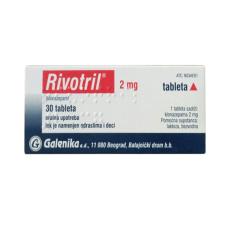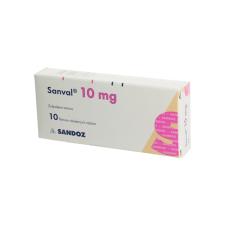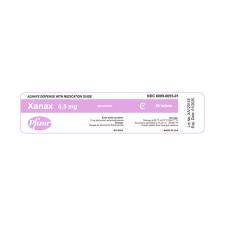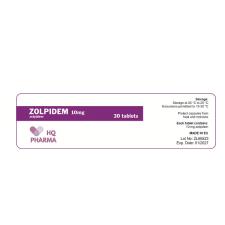Paroxetine is used for treating depression or obsessive-compulsive disorder (OCD). It may be used to treat panic disorder or posttraumatic stress disorder (PTSD). It may also be used to treat generalized anxiety disorder or social anxiety disorder. Synonyms: Pexap; Pexep; Teprox; Aropax; Pexeva; Seroxat; Antidepressants may increase the risk of suicidal thoughts or actions in children, teenagers, and young adults. However, depression and certain other mental problems may also increase the risk of suicide. Talk with the patient's doctor to be sure that the benefits of using Paroxetine outweigh the risks. Family and caregivers must closely watch patients who take Paroxetine . It is important to keep in close contact with the patient's doctor. Tell the doctor right away if the patient has symptoms like worsened depression, suicidal thoughts, or changes in behavior. Discuss any questions with the patient's doctor.
Paroxetine is used for:
Treating depression or obsessive-compulsive disorder (OCD). It may be used to treat panic disorder or posttraumatic stress disorder (PTSD). It may also be used to treat generalized anxiety disorder or social anxiety disorder. It may also be used for other conditions as determined by your doctor. Paroxetine is a selective serotonin reuptake inhibitor (SSRI). It works by restoring the balance of serotonin, a natural substance in the brain, which helps to improve certain mood problems.
Do NOT use Paroxetine if:
- you are allergic to any ingredient in Paroxetine
- you are taking or have taken a monoamine oxidase inhibitor (MAOI) (eg, phenelzine), selegiline, or St. John's wort within the last 14 days
- you are taking a fenfluramine derivative (eg, dexfenfluramine), nefazodone, pimozide, a serotonin norepinephrine reuptake inhibitor (SNRI) (eg, venlafaxine), sibutramine, thioridazine, or tryptophan
Contact your doctor or health care provider right away if any of these apply to you.
Before using Paroxetine:
Some medical conditions may interact with Paroxetine - Tell your doctor or pharmacist if you have any medical conditions, especially if any of the following apply to you:
- if you are pregnant, planning to become pregnant, or are breast-feeding
- if you are taking any prescription or nonprescription medicine, herbal preparation, or dietary supplement
- if you have allergies to medicines, foods, or other substances
- if you or a family member has a history of bipolar disorder (manic-depression), other mental or mood problems, suicidal thoughts or attempts, or alcohol or substance abuse
- if you have a history of seizures, heart problems, liver problems, severe kidney problems, stomach or bowel bleeding, narrow-angle glaucoma, diabetes, or metabolism problems
- if you are dehydrated, have low blood sodium levels, or drink alcohol
- if you will be having electroconvulsive therapy (ECT)
Some MEDICINES MAY INTERACT with Paroxetine. Tell your health care provider if you are taking any other medicines, especially any of the following:
- Anorexiants (eg, phentermine), cimetidine, fenfluramine derivatives (eg, dexfenfluramine), linezolid, lithium, MAOIs (eg, phenelzine), metoclopramide, nefazodone, selegiline, serotonin 5-HT1 receptor agonists (eg, sumatriptan), SNRIs (eg, venlafaxine), sibutramine, St. John's wort, tramadol, trazodone, or tryptophan because severe side effects, such as a reaction that may include fever, rigid muscles, blood pressure changes, mental changes, confusion, irritability, agitation, delirium, and coma, may occur
- Anticoagulants (eg, warfarin), aspirin, or nonsteroidal anti-inflammatory drugs (NSAIDs) (eg, ibuprofen) because the risk of bleeding, including stomach bleeding, may be increased
- Diuretics (eg, furosemide, hydrochlorothiazide) because the risk of blood sodium levels may be increased
- Antiarrhythmics (eg, flecainide, propafenone, quinidine), H1 antagonists (eg, astemizole, terfenadine), or phenothiazines (eg, chlorpromazine, thioridazine) because severe heart problems, including irregular heartbeat, may occur
- Cyproheptadine, HIV protease inhibitors (eg, ritonavir), phenobarbital, or phenytoin because they may decrease Paroxetine 's effectiveness
- Aripiprazole, atomoxetine, clozapine, fluoxetine, pimozide, procyclidine, risperidone, theophylline, or tricyclic antidepressants (eg, amitriptyline) because the risk of their side effects may be increased by Paroxetine
- Digoxin because its effectiveness may be decreased by Paroxetine
This may not be a complete list of all interactions that may occur. Ask your health care provider if Paroxetine may interact with other medicines that you take. Check with your health care provider before you start, stop, or change the dose of any medicine.
How to use Paroxetine:
Use Paroxetine as directed by your doctor. Check the label on the medicine for exact dosing instructions.
- Paroxetine comes with an extra patient information sheet called a Medication Guide. Read it carefully. Read it again each time you get Paroxetine refilled.
- Take Paroxetine by mouth with or without food.
- Swallow Paroxetine whole. Do not break, crush, or chew before swallowing.
- Taking Paroxetine at the same time each day will help you remember to take it.
- Continue to take Paroxetine even if you feel well. Do not miss any doses.
- Do not suddenly stop taking Paroxetine without checking with your doctor. Side effects may occur. They may include mental or mood changes, numbness or tingling of the skin, dizziness, confusion, headache, trouble sleeping, or unusual tiredness. You will be closely monitored when you start Paroxetine and whenever a change in dose is made.
- If you miss a dose of Paroxetine , take it as soon as possible. If it almost time for your next dose, skip the missed dose. Go back to your regular dosing schedule. Do not take 2 doses at once.
Ask your health care provider any questions you may have about how to use Paroxetine .
Important safety information:
- Paroxetine may cause drowsiness, dizziness, or blurred vision. These effects may be worse if you take it with alcohol or certain medicines. Use Paroxetine with caution. Do not drive or perform other possibly unsafe tasks until you know how you react to it.
- Do not drink alcohol while you are using Paroxetine.
- Check with your doctor before you use medicines that may cause drowsiness (eg, sleep aids, muscle relaxers) while you are using Paroxetine ; it may add to their effects. Ask your pharmacist if you have questions about which medicines may cause drowsiness.
- Several weeks may pass before your symptoms improve. Do NOT take more than the recommended dose, change your dose, or use Paroxetine for longer than prescribed without checking with your doctor.
- Children, teenagers, and young adults who take Paroxetine may be at increased risk for suicidal thoughts or actions. Watch all patients who take Paroxetine closely. Contact the doctor at once if new, worsened, or sudden symptoms such as depressed mood; anxious, restless, or irritable behavior; panic attacks; or any unusual change in mood or behavior occur. Contact the doctor right away if any signs of suicidal thoughts or actions occur.
- If your doctor tells you to stop taking Paroxetine , you will need to wait for several weeks before beginning to take certain other medicines (eg, MAOIs, nefazodone). Ask your doctor when you should start to take your new medicines after you have stopped taking Paroxetine.
- Paroxetine may rarely cause a prolonged, painful erection. This could happen even when you are not having sex. If this is not treated right away, it could lead to permanent sexual problems such as impotence. Contact your doctor right away if this happens.
- Serotonin syndrome is a possibly fatal syndrome that can be caused by Paroxetine . Your risk may be greater if you take Paroxetine with certain other medicines (eg, triptans, MAOIs). Symptoms may include agitation; confusion; hallucinations; coma; fever; fast or irregular heartbeat; tremor; excessive sweating; and nausea, vomiting, or diarrhea. Contact your doctor at once if you have any of these symptoms.
- Caution is advised when using Paroxetine in the ELDERLY; they may be more sensitive to its effects, especially low blood sodium levels.
- Caution is advised when using Paroxetine in CHILDREN; they may be more sensitive to its effects, especially increased risk of suicidal thoughts and actions.
- Paroxetine should be used with extreme caution in CHILDREN; safety and effectiveness in these children have not been confirmed.
- Paroxetine may cause weight changes. CHILDREN and teenagers may need regular weight and growth checks while they take Paroxetine.
- PREGNANCY and BREAST-FEEDING: Paroxetine may cause harm to the fetus. If you become pregnant, contact your doctor. You will need to discuss the benefits and risks of using Paroxetine while you are pregnant. Paroxetine is found in breast milk. If you are or will be breast-feeding while you use Paroxetine , check with your doctor. Discuss any possible risks to your baby.
Possible side effects of Paroxetine:
All medicines may cause side effects, but many people have no, or minor, side effects. Check with your doctor if any of these most COMMON side effects persist or become bothersome:
- Anxiety; blurred vision; constipation; decreased sexual desire or ability; diarrhea; dizziness; drowsiness; dry mouth; gas; increased sweating; increased urination; loss of appetite; nausea; nervousness; stomach upset; trouble concentrating; trouble sleeping; unusual skin sensations; weakness; yawning.
Seek medical attention right away if any of these SEVERE side effects occur:
- Severe allergic reactions (rash; hives; itching; difficulty breathing; tightness in the chest; swelling of the mouth, face, lips, or tongue); bizarre behavior; black or bloody stools; chest pain; exaggerated reflexes; fast or irregular heartbeat; fever, chills, or sore throat; hallucinations; loss of coordination; new or worsening agitation, panic attacks, aggressiveness, impulsiveness, irritability, hostility, exaggerated feeling of well-being, restlessness, or inability to sit still; persistent or severe ringing in the ears; persistent, painful erection; red, swollen, blistered, or peeling skin; seizures; severe or persistent anxiety or trouble sleeping; significant weight loss; stomach pain; suicidal thoughts or attempts; tremor; unusual bruising or bleeding; unusual or severe mental or mood changes; vision changes; worsening of depression.
This is not a complete list of all side effects that may occur.
Proper storage of Paroxetine:
Store Paroxetine at room temperature, between 59 and 86 degrees F (15 and 30 degrees C). Store away from heat, moisture, and light. Do not store in the bathroom. Keep Paroxetine out of the reach of children and away from pets.














































